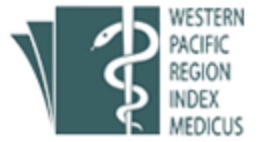Diagnostic Accuracy of Fine Needle Aspiration Cytology of Thyroid in Hospital Sultanah Nur Zahirah, Malaysia
DOI:
https://doi.org/10.31436/imjm.v24i03.2573Keywords:
Thyroid, Fine Needle Aspiration cytology (FNAC), Bethesda systemAbstract
INTRODUCTION: Fine Needle Aspiration Cytology (FNAC) is widely used as an initial screening method in the preoperative examination of thyroid lesions. However, diagnostic cytology interpretation remains inconsistent among reporting pathologists worldwide. This study aimed to determine the diagnostic accuracy of FNAC of thyroid lesions at Hospital Sultanah Nur Zahirah (HSNZ), a tertiary hospital in Kuala Terengganu, Malaysia. MATERIAL AND METHODS: We conducted a retrospective cross-sectional study at the Department of Pathology, HSNZ, from January 2017 to December 2019. Data of patients were collected from the Laboratory Information System (LIS) and Hospital Information System (HIS). The study included patients with thyroid lesions who underwent both FNAC and subsequent histopathological examination (HPE). RESULT: A total of 389 cases of thyroid lesions underwent FNAC, with 162 cases proceeding to surgical resection. The median age of the patients was 43.3 years, with a male to female ratio of 1:5.3. FNAC diagnoses were categorized as follows: 85 cases (52.5%) were benign, 23 (14.2%) as atypia or follicular lesion of undetermined significance, 9 (5.6%) as follicular neoplasm, 21 (13%) as suspicious for malignancy, and 12 (7.4%) as malignant and unsatisfactory. The diagnostic accuracy of FNAC was 85.8%, with sensitivity of 66.7% and specificity of 96.2%. The positive predictive value was 90.5%, and the negative predictive value was 84.2%. CONCLUSION: FNAC has proven to be an accurate diagnostic method for screening thyroid lesions. However, continuous improvement in sampling and preparation techniques and cytopathologist training is necessary to enhance its reliability further.
Downloads
Downloads
Published
How to Cite
Issue
Section
License
All material submitted for publication is assumed to be submitted exclusively to the IIUM Medical Journal Malaysia (IMJM) unless the contrary is stated. Manuscript decisions are based on a double-blinded peer review process. The Editor retains the right to determine the style and if necessary, edit and shorten any material accepted for publication.
IMJM retain copyright to all the articles published in the journal. All final ‘proof’ submissions must be accompanied by a completed Copyright Assignment Form, duly signed by all authors. The author(s) or copyright owner(s) irrevocably grant(s) to any third party, in advance and in perpetuity, the right to use, reproduce or disseminate the research article in its entirety or in part, in any format or medium, provided that no substantive errors are introduced in the process, proper attribution of authorship and correct citation details are given, and that the bibliographic details are not changed. If the article is reproduced or disseminated in part, this must be clearly and unequivocally indicated.










